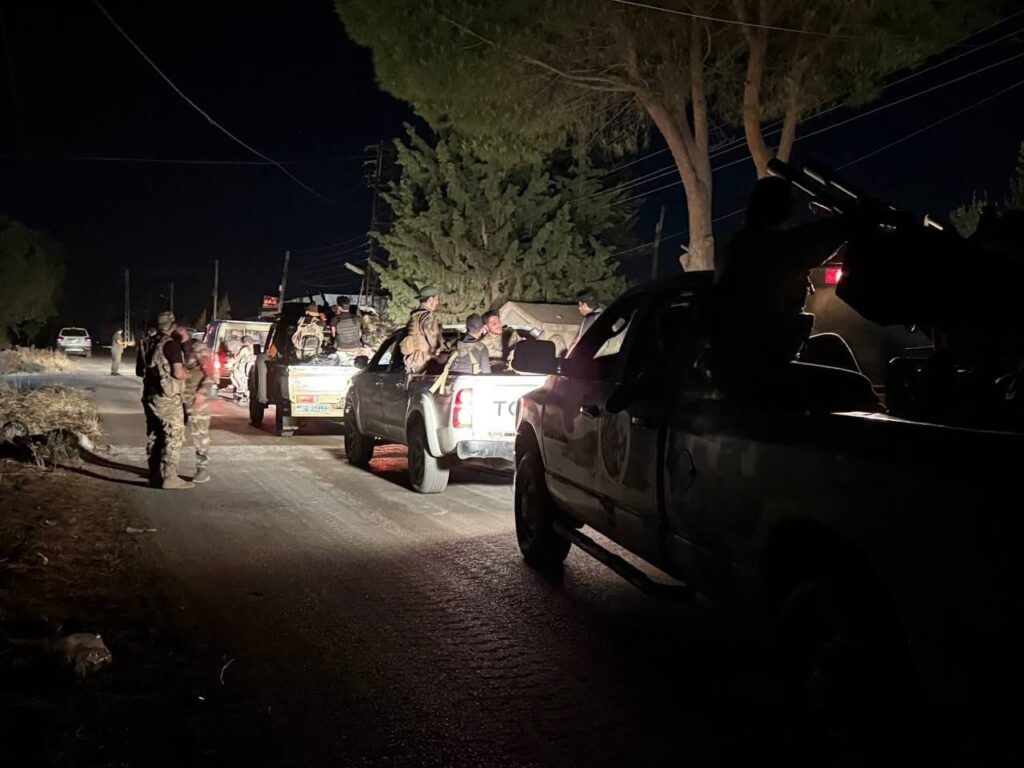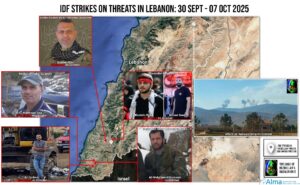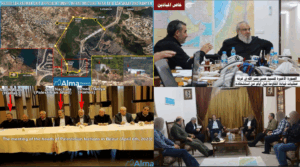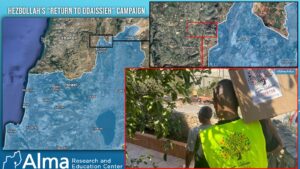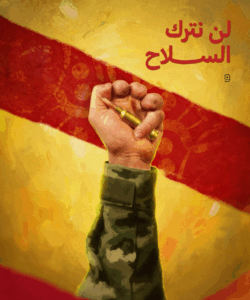In recent days, fierce clashes occurred in southern Syria, in the city of Suwayda, an area populated mostly by the Druze. The flare-up began with riots and mutual kidnappings between Druze and Sunni Bedouins supporting the Syrian regime. Forces of the new Syrian regime’s army and internal security, including jihadist elements within these forces, invaded the city of Suwayda, thereby dramatically escalating the confrontation.
During the fighting, there were reports of hundreds of deaths – on either side, both military and civilian. Regime forces (army and internal security) allegedly committed, according to reports, videos, and photos from the field, massacres of innocent civilians, war crimes, abuse, religious humiliations and religious persecution. It is also important to note that there are severe accounts of acts committed by the Druze against regime forces and against the Bedouins (such as, abuse, acts of revenge, killings, property arson, etc.).
With the commencement of the fighting in Suwayda, the Syrian army sent reinforcements to the area, including armored forces, which fought against the Druze militias. Army forces came from several brigades and divisions. It is estimated that about 1,000 soldiers from the army participated in the fighting.
During the night between July 16 and 17, after three days of battles, the regime’s army and internal security forces began to withdraw from the Suwayda area, due to a ceasefire agreement between the Druze leadership and the Syrian regime. Syrian President Ahmad al-Sharaa (Abu Muhammad al-Julani) delivered a speech in which he pledged to protect the Druze and asserted that a war with Israel had nearly erupted—an outcome that was ultimately averted through mediation.
While the events deeply shocked both the Druze and Israel, they did not constitute an act of mass annihilation. Nonetheless, it is evident that the conduct on the ground violates international law, and that the jihadist forces aligned with Ahmad al-Sharaa regard the Druze as “infidels deserving death.”
In the face of this situation, Israel found itself dealing with a strategic and moral dilemma.
The demand to intervene was heard clearly from the Druze in Israel, led by Sheikh Mowafak Tarif, who called for immediate action.
Israel does not want to open another front in the heart of Syria. The intervention was carried out in a controlled manner: precise airstrikes against targets of the regime’s army and internal security, and against government infrastructure, including the Syrian Ministry of Defense building in Damascus and in proximity to the presidential palace. These actions were also intended to send a firm message: Israel will not stand idly by when nearby minorities are attacked and when a jihadist threat approaches its border.
On the other hand, Israel does not want to be involved now in another war and front against the new regime in Syria, while also dealing with Gaza, Judea and Samaria, Lebanon, Iran, Yemen, and additional attempts by the Shiite axis and Palestinians to carry out terror from southern Syria.
Israeli considerations included three central layers: The first, a moral-national commitment to the Druze in Israel, a minority that has been a partner for many years in Israel’s struggle for existence. It is worth noting that the events did not skip over Israel itself.
The Druze responded to Sheikh Tarif’s call and blocked traffic at central junctions throughout Israel in protest.
Later, over a thousand Druze from the Israeli side crossed the border into Syria – breaching the border fence, which required military and police intervention to retrieve them.
Beyond being a dangerous event – which could lead to kidnappings or killings of Israeli civilians in Syria – it also reflects the deep sense of commitment of the national Druze stream in Israel to the Druze in Syria. However, in tracking various publications, it appears that a part of those who crossed from Israel into Syria took advantage of the situation with the aim of meeting family members in the village of Khadr. Others did so simply for the adventure, i.e., to take pictures inside Syrian territory.
The second layer in Israeli considerations, connected to the first, is the security obligation to prevent a jihadist takeover of the central Druze area in Suwayda, located about 60 kilometers from the Israeli border.
The third layer was the conveyance of a clear message of deterrence. However, not all parties in Israel’s defense establishment and society are convinced that focusing on striking Syrian government symbols – like the Ministry of Defense in Damascus – indeed achieves its goals.
The question of deterrence effectiveness against extreme jihadist actors remains open, especially given the fact that revenge is a significant value in this culture. Moreover, striking symbols of authority sets a high bar – what will happen next time? The demand on Israel to send ground forces deep into Syria in the future is not feasible, certainly not in the midst of a multi-front war.
It is important to state that among the Druze in Syria, there are several approaches regarding the new regime in Damascus and Israeli involvement in the internal Syrian arena:
Members of Rijal al-Karama and Laith Balous seek to integrate into the structure of the new Syrian regime. In contrast, Sheikh al-Hajri calls for continued armed struggle and even appeals to Druze outside Syria to join. Al-Hajri is currently the leading figure in recent events. Additionally, Sheikh Hikmat al-Jarbua consistently opposes external involvement, including Israeli intervention, seeing it as a purely internal Syrian matter.
In the Lebanese arena, there was no mobilization – Druze leader Walid Jumblatt was criticized for his silence, and the Lebanese army blocked most attempts by Lebanese Druze to cross the border into Syria. At the same time, there is also a competition over the leadership of the Druze community: Sheikh Tarif from Israel seeks to position himself as a pan-Druze leader, similar to his father. Israel has essentially found itself defending the Druze from violent jihadist marauders, but at the same time, there is also internal Druze and internal Syrian politics that are not always understood by decision-makers in Israel and the West.
It is difficult to assess whether Ahmad al-Sharaa wishes to adopt the Saudi or Emirati model of a traditional Islamic state with close ties to the West, or if it is all a cover for his dangerous agenda of building an extreme Islamic state in the style of ISIS in the future.
But the truth is that it doesn’t matter, because the recent events prove that the threat exists even if al-Sharaa claims he has no violent intentions toward Israel.
Beyond the immediate crisis, Israel must prepare for the future. The Suwayda event is a first warning sign that such events, and perhaps even more violent ones, will occur in the future.
After all, Syria has a stability of instability. The national stream of the Druze in Israel will continue to pressure any Israeli government to intervene significantly, including sending ground forces up to Suwayda (bear in mind, 60 kilometers from the Israeli border…).
The Israeli government will need to create a fast and efficient coordination and dialogue mechanism with the Druze leadership in Israel, to prevent pressures that might drag it into an unwanted action. Additionally, early organization is required to prevent border breaches from either side, define red lines, and build case-response scenarios at both operational and political-diplomatic levels.
Beyond the immediate considerations on the ground, the Suwayda events also have an impact on the broader diplomatic context.
It appears the international system is “locked” on legitimizing the Syrian regime – each actor with their reasons: from Syrian refugees in Europe to Trump’s desire to include Syria in the Abraham Accords, in part due to its being fertile ground for investments and business during reconstruction, sidelining Russia and the Shiite axis, and more.
Therefore, Israel will have to (and may even be forced to) return to the negotiating table.
From Israel’s perspective, the events strengthened the security argument presented to its international partners: The need for demilitarized zones in southern Syria is not a dictate but a basic necessity. The infiltration of jihadist forces into areas near the border illustrates how sensitive southern Syria is in security terms. When negotiations or diplomatic contacts resume – whether between Israel and the U.S. or with regional players – the Suwayda events will serve as living testimony that Israel cannot rely on general promises by Syrian regimes or organizations but demands clear guarantees to neutralize the threat from the area.
The Israeli strikes in Damascus were intended to clarify to al-Sharaa what Israel’s red lines are, and how determined it is to defend them – this is also true for future security arrangements in any agreement. However, it is possible that the recent events only widened the gaps between the parties: In the current situation, Israel will not want to withdraw from the buffer zone and abandon its security and the safety of the Druze minority in southern Syria to the mercy of jihadist elements operating under the security forces of al-Sharaa’s regime. Israel also will not agree to stop airstrikes in the name of a dubious security arrangement.
The events also exposed the problematic nature of lifting sanctions on HTS, al-Sharaa’s organization, many of whose “former” operatives fought in Suwayda in security force uniforms and attacked the Druze. This organization received international legitimization.
Even if it is claimed that the problem is not Ahmad al-Sharaa himself, but factions allegedly subordinate to him and perhaps beyond his control, sanctions should not have been lifted from this jihadist organization that originated in al-Qaeda. We must not forget September 11, 2001, and October 7, 2023, and what extreme Islamic ideology can do.
In this light, portraying the event in the media as a conflict between Israel and Syria is deeply frustrating and reveals a fundamental misunderstanding of the reality. The Syrians have been tearing each other apart without Israel’s involvement for over a decade, during a civil war that claimed more than half a million lives and displaced millions.
Israel chose to intervene due to the ongoing failure of the international community to safeguard minority groups in Syria. This is not the first instance where Israel has stepped in to fill a void left by global inaction — similar precedents include its response to the Iranian nuclear threat and the 12-day war against Iran in June 2025.
The tragic event in Suwayda, even if temporarily over, is not the final word – and more events, perhaps even more violent ones, may occur.
This is the opening of a new chapter in the Syrian arena – and a new test for Israel and the international system.

